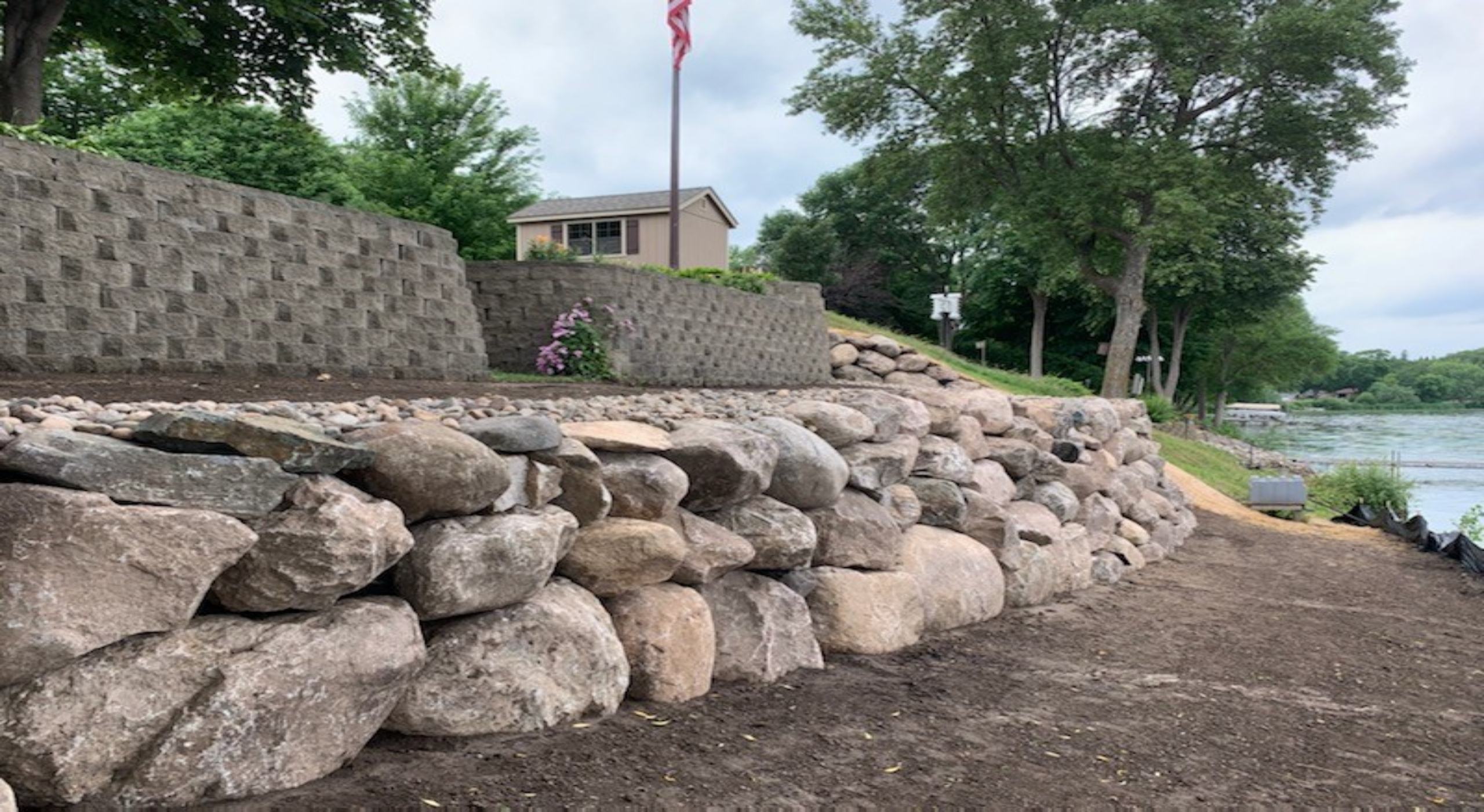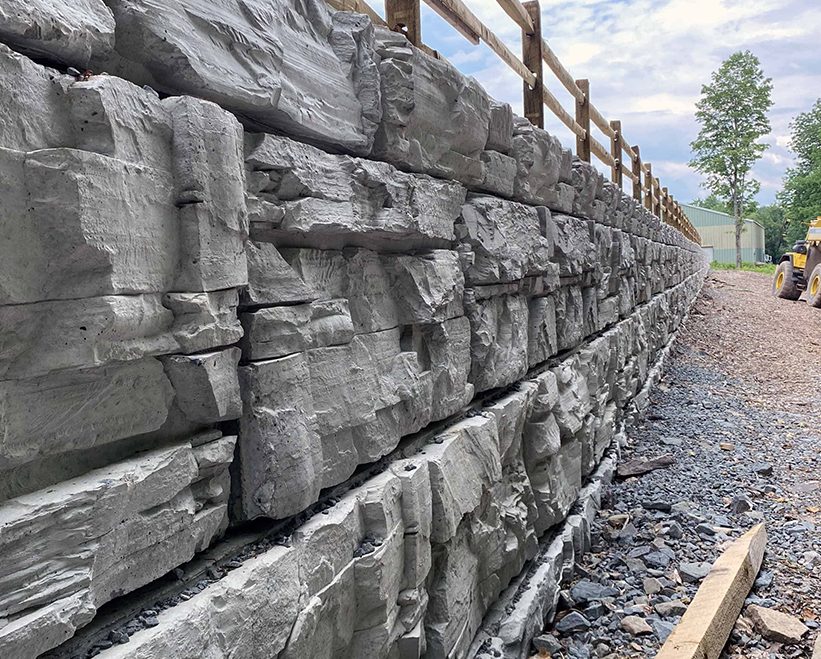OKC Precision Retaining Walls: Stability and aesthetics for Oklahoma landscapes
Trick Factors To Consider for Structure Effective Retaining Walls in Your Yard
When you're considering developing a maintaining wall in your yard, it's essential to think of several vital factors. The wall's function, the materials you'll utilize, and the specific dirt problems can all influence its efficiency and long life. You'll also require to navigate local building regulations and strategy for proper drain. Exactly how do you guarantee your style not only satisfies these demands but likewise enhances your landscape? Let's discover the necessary actions together.
Recognizing the Purpose of Your Retaining Wall
When you consider developing a retaining wall, consider its primary objective: stabilizing dirt and avoiding erosion. Retaining walls supply important assistance for sloped landscapes, aiding to keep dirt honesty. You'll find they're important in locations where water drainage could otherwise wash away soil, causing costly repair services and landscape damages.
By keeping back planet, these walls develop level surface areas for yards, patio areas, or paths. This not just boosts your yard's looks however additionally advertises far better water drainage, reducing water pooling in unwanted areas. If you're dealing with steep inclines, a sound retaining wall can prevent landslides, making certain security for you and your building.
Ultimately, recognizing the purpose of your retaining wall will guide your design decisions and help you develop a functional, resilient framework that fulfills your requirements. Take a minute to examine your landscape; it'll pay off in the long run.
Choosing the Right Products
When choosing materials for your retaining wall, you'll desire to take into consideration sturdiness, visual appeals, and expense. Each aspect plays a necessary function in ensuring your wall surface stands the examination of time while looking terrific and fitting your budget. Allow's check out how to make the finest options for your project.
Product Toughness Elements
Choosing the appropriate products is crucial for the longevity and performance of your retaining wall, since their longevity straight impacts the wall's capacity to stand up to environmental stress and anxieties. Begin by considering your neighborhood climate; products like concrete and rock withstand dampness and temperature variations well. If you live in a location prone to heavy rainfalls, select products with good drain buildings, like gravel or permeable blocks, to avoid water buildup.
Furthermore, consider the dirt problems on your building. Some materials carry out much better in specific dirt types, so it is very important to match them accordingly. Finally, be aware of prospective wear from bugs or disintegration. Selecting durable materials assurances your retaining wall surface stands strong, protecting your lawn for years to find.
Visual Design Options
Resilient materials not just assure your retaining wall's structural honesty however additionally play a key duty in its aesthetic allure. Do not fail to remember regarding the wall's form-- rounded walls can create a softer look, while straight lines can feel extra structured. By carefully selecting products that align with your visual vision, you'll improve your exterior area while guaranteeing your wall stands strong versus the elements.
Cost-Effectiveness Evaluation
Selecting the best products for your retaining wall isn't simply concerning visual appeals; it's likewise necessary for your budget. When choosing products, think about both ahead of time prices and long-term resilience.
Do not fail to remember to variable in upkeep prices also (OKC Precision Retaining Walls). Some products, like natural stone, can add charm and need much less maintenance, while others might need routine treatments
Inevitably, evaluate the pros and disadvantages of each option versus your budget plan and the wall's intended purpose. Investing carefully in products currently can stop costly problems in the future. Pick products that balance cost and efficiency successfully.
Assessing Dirt Conditions and Drain
As you begin your project, evaluating dirt problems and water drainage is important for the success of your retaining wall surface. Start by checking out the kind of dirt in your lawn. Sandy dirt drains pipes well however lacks security, while clay soil can preserve moisture, leading to press on your wall surface. Examine the soil's dampness content by digging a little opening and observing just how rapidly it dries out.
Next, examine the incline of your backyard. If water naturally moves towards your wall surface, you'll require to apply a drainage service to stop disintegration and pressure buildup. Think about mounting perforated pipelines or crushed rock backfill behind the wall surface to help with drainage.
Last but not least, observe any kind of nearby trees or vegetation; their roots can affect dirt security. By recognizing your soil problems and applying proper drain, you'll produce a solid foundation for your retaining wall surface that stands the test of time.
Complying With Local Building Regulations
Prior to you begin developing your retaining wall, you require to research study local guidelines to assure conformity. It's necessary to comprehend what allows you have to obtain, as this can save you from pricey penalties or needing to redesign your job. Taking these actions seriously will assist you build a secure and reliable framework.
Study Local Regulations
Recognizing neighborhood regulations is crucial when planning my website your retaining wall job, specifically because developing codes can differ considerably by area. Look for guidelines on wall elevation, materials, water drainage systems, and architectural integrity. By doing your study upfront, you can ensure your retaining wall surface meets all needed codes and blends seamlessly into your lawn.
Obtain Essential Permits
When you've looked into local policies, the following step is to get the required licenses for your retaining wall job. This process warranties your wall abides by building codes and security criteria. Get to out to your local building authority to figure out what permits you need. They might call for specific plans or design analyses, specifically for larger walls. Be prepared to send in-depth illustrations, consisting of measurements and materials. Don't fail to remember to examine if your project influences water drainage or bordering residential or commercial properties, as these variables may need additional authorizations. Safeguarding the right approvals can save you from pricey fines or having to dismantle your wall later. Bear in mind, following the guidelines currently will lead to a smoother building experience.

Planning the Layout and Aesthetics
As you commence planning the layout and looks of your retaining wall, take into consideration exactly how it will certainly balance with the bordering landscape. Think of the materials you'll utilize-- stone, brick, or concrete-- and exactly how they'll enhance your home's style and the natural environments in your lawn. Choose colors and textures that blend flawlessly with existing attributes like patio areas, paths, or gardens.
Following, visualize the wall's shape and elevation. Rounded walls can soften a rigid landscape, while straight lines may communicate an extra modern-day look. Do not forget to integrate plants and greenery around the wall for an all-natural touch; this can enhance its allure and incorporate it right into the setting.
Last but not least, bear in mind capability. Your layout needs to not only be aesthetically pleasing but also offer its purpose effectively. By thoughtfully preparing these aspects, you'll produce a retaining wall surface that improves your yard's elegance while fulfilling its structural duty.
Computing Height and Density Needs
To construct a tough retaining wall, you require to accurately calculate its height and density requirements based on the dirt problems and the elevation of the incline it will certainly sustain. Beginning by reviewing the slope's angle and the type of soil, as different soils apply varying quantities of stress.
For a fantastic read walls over four feet high, take into consideration a density of at least 12 inches. If the wall is taller, boost the thickness proportionally to keep security.
Next, compute the elevation of the wall by gauging the upright distance it requires to maintain. For each foot of height, you ought to generally prepare for a density of one-third of the wall's height.
Constantly bear in mind to represent additional elements like drainage and backfill, which can influence your wall's design. Correct estimations now ensure your retaining wall stands solid and lasts for many years to find.
Maintenance and Long Life Considerations
While keeping your retaining wall surface could look like a low top priority, overlooking it can result in significant issues in time. Regular assessments are crucial; look for splits, bulges, or any type of indications of water damage. Resolving these problems early can conserve you from costly repair work later on.
Watch on drainage systems, too. Blocked drains can trigger water to build up, putting in pressure on your wall surface and endangering its security. Clear debris and warranty appropriate circulation to maintain durability.
You may likewise intend to review sealing your wall you can try here to secure it from wetness and weathering. Depending on the material, this could call for reapplication every couple of years.
Finally, landscaping around your wall surface can support its stability. Stay clear of planting large trees nearby, as their roots can weaken the foundation. With aggressive upkeep, your retaining wall surface can offer you well for years ahead.

Regularly Asked Questions
Can I Build a Retaining Wall by Myself, or Should I Work with a Specialist?
You can most definitely construct a retaining wall on your own if you have the right devices and knowledge. Working with a professional assurances it's done correctly, particularly for bigger or more complicated frameworks. Consider your ability degree before choosing.
What Are the A Lot Of Typical Mistakes Made When Building Retaining Walls?
When building retaining walls, you could overlook appropriate water drainage, avoid using the best materials, or forget reinforcement. These usual blunders can result in structural failing, so take your time and strategy thoroughly to stay clear of problems.
Exactly how Do I Know if My Retaining Wall Requirements Support?
You'll know your retaining wall requires support if you discover fractures, leaning, or bulging. Inspect for water merging behind it or soil disintegration near the base. Address these indications immediately to stop additional damages.
What Plants Appropriate for Landscaping Around a Retaining Wall?
When landscape design around a retaining wall surface, think about using low-maintenance plants like succulents, decorative lawns, or sneaking ground covers - OKC Precision Retaining Walls. They'll flourish in those conditions and include beauty while preventing dirt erosion around your wall
Exactly How Can I Protect Against Disintegration Around My Retaining Wall?
To prevent disintegration around your retaining wall surface, you can grow ground cover, use mulch, and install water drainage systems. On a regular basis look for water accumulation and adjust landscaping to redirect overflow away from the wall surface.